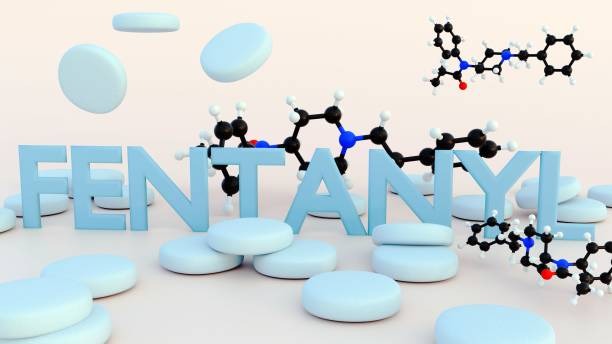When taken as prescribed, Xanax can provide short-term relief from anxiety and panic disorders. But for many individuals, prolonged use or misuse of this benzodiazepine can lead to dependence and withdrawal symptoms that are both uncomfortable and dangerous. For those seeking a safe and medically supported path to recovery, Xanax withdrawal treatment offers critical care during the earliest and most vulnerable stage of healing.
Xanax, the brand name for alprazolam, is one of the most prescribed psychiatric medications in the United States. While effective for acute anxiety, its fast-acting nature and short half-life increase the risk of tolerance, physical dependence, and addiction. Once dependence forms, discontinuing use without professional help can result in severe withdrawal symptoms, including seizures and life-threatening complications.
Understanding Xanax Dependence and Withdrawal
Xanax belongs to a class of medications called benzodiazepines, which work by enhancing the effect of gamma-aminobutyric acid (GABA) in the brain. GABA is a neurotransmitter that reduces nerve activity, promoting calm and relaxation. When taken over a prolonged period—even at therapeutic doses—the brain adapts by producing less GABA naturally. As a result, stopping Xanax suddenly can cause the nervous system to become overactive, leading to withdrawal.
Common signs of Xanax dependence include:
- Needing higher doses to achieve the same effect
- Using Xanax more frequently than prescribed
- Experiencing cravings or anxiety when not using the drug
- Avoiding situations where Xanax use might be noticed
- Inability to stop or reduce use despite consequences
If any of these symptoms are present, especially combined with daily use for more than a few weeks, professional withdrawal treatment should be considered.
Why Medical Xanax Withdrawal Treatment Is Necessary
While many individuals may feel capable of discontinuing Xanax independently, attempting to do so without professional guidance can lead to severe and potentially life-threatening complications. Medically supervised Xanax withdrawal offers a crucial framework for safety and success, providing a controlled environment that significantly reduces the risk of dangerous symptoms like seizures. In a medical setting, patients receive personalized, gradual tapering schedules based on their specific usage history, along with medications to manage distressing withdrawal symptoms such as anxiety, insomnia, and physical discomfort. Furthermore, the constant availability of emotional support from trained clinicians and addiction specialists, coupled with immediate intervention for any emerging complications, ensures a much safer process. This comprehensive approach not only mitigates the risks of relapse and the associated feelings of fear and shame common in unsupervised attempts but also includes vital transition planning for long-term therapy and recovery. Ultimately, medically supervised detox provides a supported and secure pathway to overcoming Xanax dependence.
Medications Used During Xanax Withdrawal Treatment
To reduce the intensity of symptoms and prevent medical emergencies, treatment centers may use a combination of medications, including:
- Long-acting benzodiazepines like diazepam or clonazepam should be tapered slowly
- Anticonvulsants to prevent seizures
- Antidepressants to manage depression and anxiety
- Beta-blockers to reduce heart rate and tremors
- Sleep aids help regulate the circadian rhythm.
.
The exact medication regimen is determined by the clinical team based on the patient’s needs and risk profile.
Co-Occurring Disorders and Xanax Withdrawal
Many individuals who become dependent on Xanax initially began taking it to manage a legitimate mental health condition, such as anxiety, PTSD, panic disorder, or insomnia. For these individuals, treating the underlying mental health condition is just as important as detoxing from the drug.
That’s why the most effective Xanax withdrawal treatment programs provide dual diagnosis care, offering psychiatric evaluations, therapy, and medication management alongside detox. This integrated approach ensures that recovery addresses both the physical and psychological dimensions of the problem.
Dangers of Quitting Xanax Abruptly
One of the most dangerous aspects of benzodiazepine withdrawal is the potential for rebound effects and seizures. When Xanax is stopped suddenly, the brain experiences a surge in neural activity that can lead to severe symptoms, including:
- Grand mal seizures
- Psychotic episodes
- Intense panic or suicidal ideation
- Cardiac complications in vulnerable individuals
These dangers are why detoxing under medical supervision is not just recommended—it’s essential.
Who Needs Xanax Withdrawal Treatment?
While not everyone who uses Xanax will need a formal detoxification program, certain individuals face a significantly higher risk of complications and should not attempt to stop without professional support. This high-risk category includes those who have used Xanax daily for more than a month, have a history of seizures or epilepsy, or have previously tried and failed to quit on their own. The danger is particularly acute for individuals combining Xanax with other substances like opioids or alcohol, as well as for those with co-occurring psychiatric conditions such as bipolar disorder or schizophrenia. Furthermore, anyone who experiences intense rebound anxiety when trying to reduce their dose falls into this group. For individuals in any of these situations, seeking professional medical help is the safest and most effective path forward.
Inpatient vs. Outpatient Detox
There are two main types of detox programs for Xanax withdrawal:
Inpatient Detox:
Inpatient programs provide 24/7 medical supervision in a hospital or residential setting. This is the most appropriate choice for individuals with severe dependence, a history of seizures, or co-occurring mental health issues.
Outpatient Detox:
Outpatient programs allow individuals to live at home while checking in with a physician or clinic regularly. This is only appropriate for individuals with mild dependence, a strong support system, and no history of medical complications during withdrawal.
Most addiction specialists recommend inpatient care for Xanax withdrawal due to its complexity and risks.
What Happens After Detox?
Detox is the first step, not the final solution. Once the body has cleared Xanax, the psychological aspects of addiction and the original reasons for use must be addressed. A comprehensive treatment plan may include:
- Residential or outpatient rehab programs
- Individual therapy (CBT, DBT, trauma-informed care)
- Group therapy and peer support
- Medication management for anxiety or depression
- Relapse prevention planning
- Aftercare and alumni support groups
The transition from detox to long-term care is critical in preventing relapse and supporting full recovery.
Final Thoughts:
Xanax dependence can take hold quickly, but it is treatable with the right support. Withdrawal should never be underestimated or managed alone. By seeking professional Xanax withdrawal treatment, individuals gain access to safe medical care, emotional support, and a foundation for lifelong recovery.
If you or someone you love is struggling with Xanax misuse, don’t wait. Reach out for help from a licensed detox program and take the first step toward a healthier, more stable future. Learn more about safe, effective treatment options at Xanax withdrawal treatment.


